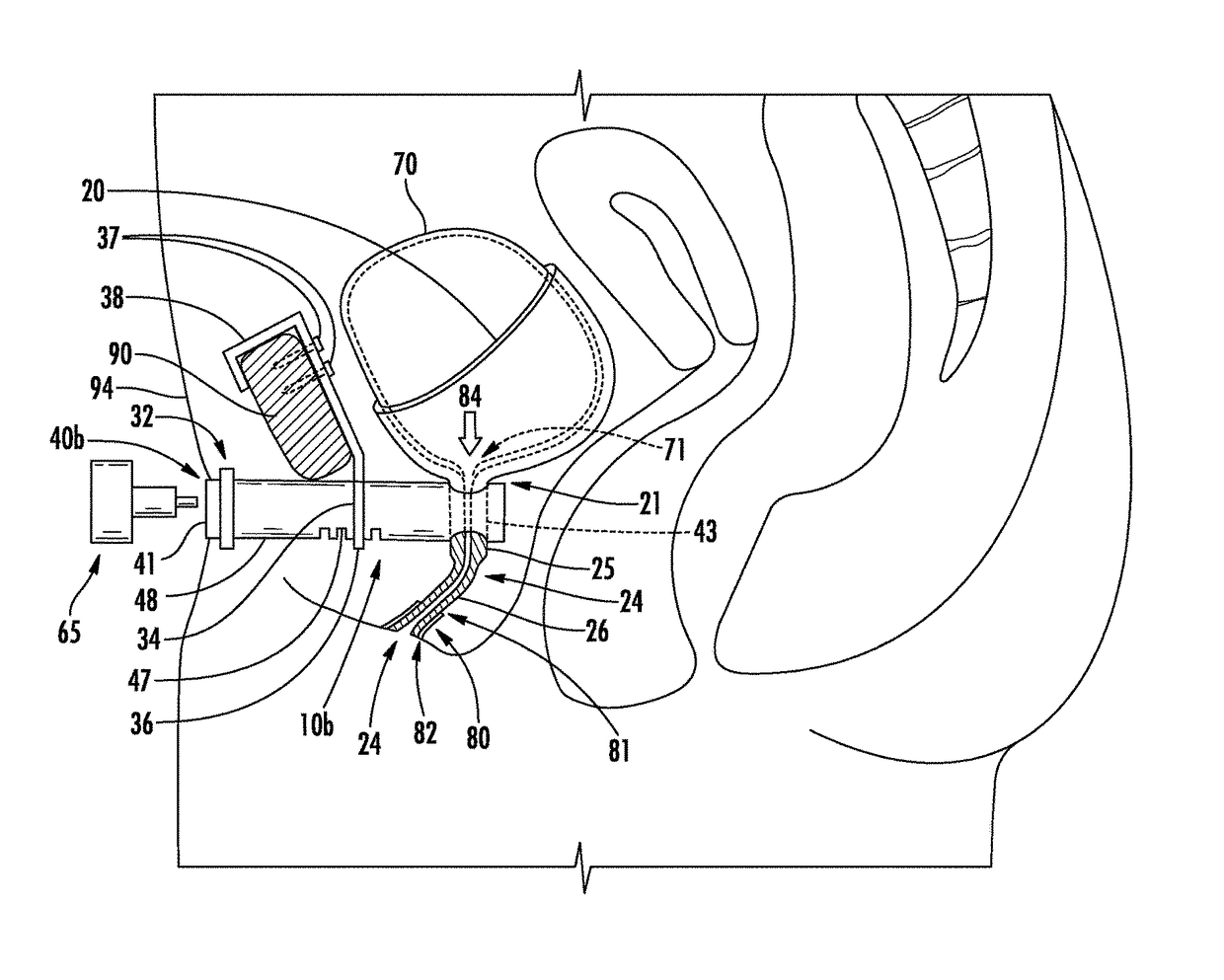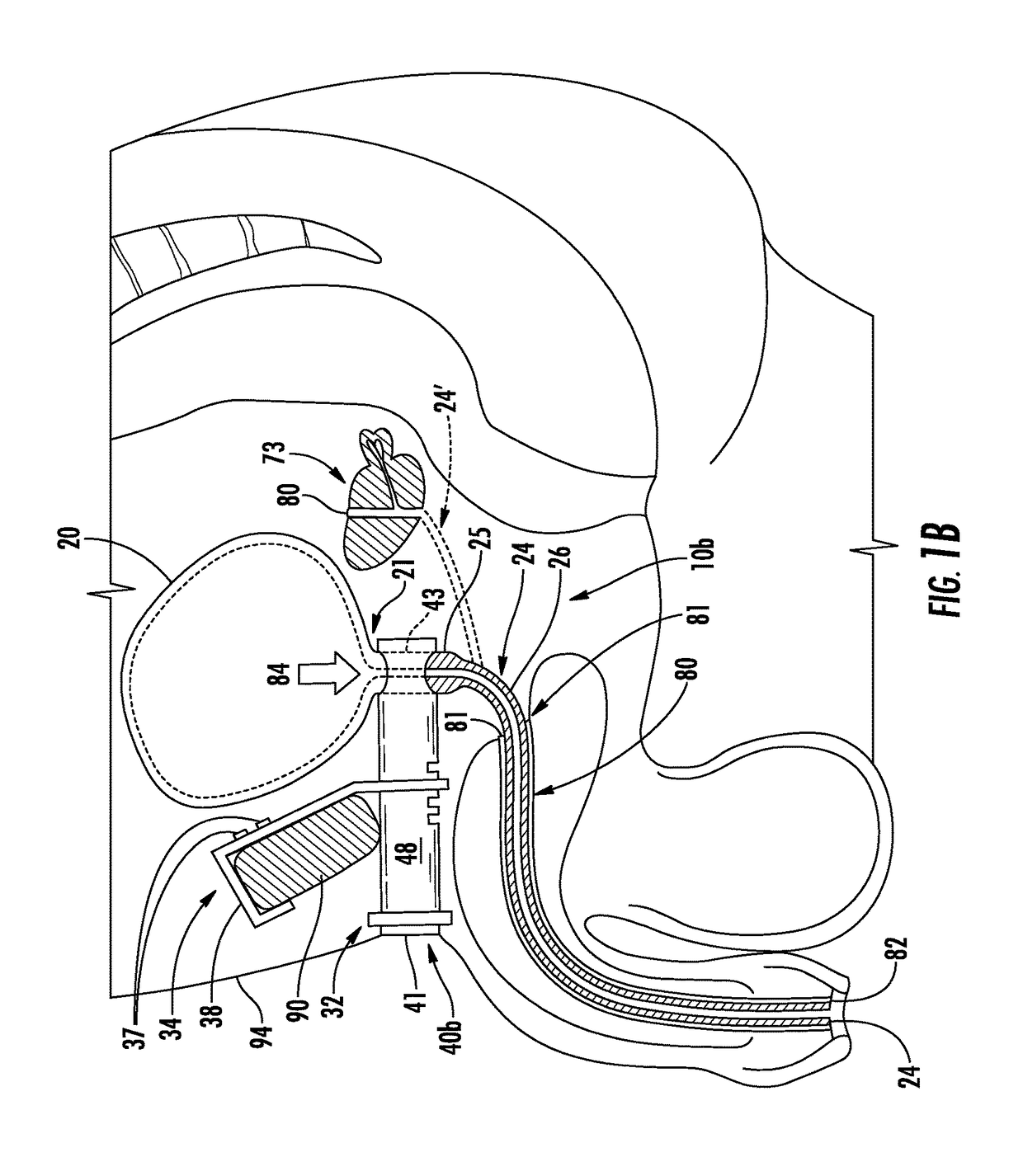This presents the problem of controlling the release and containment of urine.
UI affects all aspects of a person's life and may affect their health.
Incontinence is an expensive problem, generating more costs each year than coronary artery bypass surgery and renal dialysis combined.
Additionally, certain medications can cause or contribute to an incontinence problem, such as anticholinergic agents, antihistamines, antidepressants (TCA), phenothiazines, disopyramides, opiates, antispasmodics, Parkinson drugs, alpha-adrenergic agents (high blood pressure drugs), sympathomimetics (decongestants), and sympatholytics (e.g., prazosin, terazosin, and doxazosin).
Chronic UI is persistent and more difficult problem to treat.
Because incontinence is a symptom rather than a distinct disease, it is often difficult to determine a definite cause.
Events which may result in such involuntary leakage include sneezing, coughing, laughing, bending, lifting, etc.
While primarily a female problem, men also suffer from stress incontinence.
Urge incontinence, characterized by insufficient ability to prevent voiding once the urge to void arises, is most common in middle aged and older people.
However, urge incontinence can also be the result of urologic carcinoma, diverticula, or other physical abnormalities.
The obstruction leads to bladder overfilling, resulting in a compulsive detrusor contraction.
This condition can further result from decreased mental function, decreased functional status, and / or a simple unwillingness to physically go to the toilet.
UI, or even the fear of an incontinent incidence, can lead to discomfort and embarrassment, and eventually to social withdrawal and isolation.
Minimally invasive therapies can lead to improvement in incontinence but not necessarily a cure.
However, while affording reasonably effective control of urine leakage and providing mobility to the patient, absorbents also have very serious drawbacks.
A major deficiency is that urine is not removed from the genital region.
The absorbents merely collect and disperse the urine and maintain a moist environment with the urine typically remaining in contact with skin surfaces, causing irritation and discomfort.
While improved constructions with different absorbent layers attempt to direct the urine to a region away from the skin and minimize contact, the resulting benefit is less then desired.
Such an arrangement when dry is uncomfortable to the wearer.
When wet the discomfort level increases greatly and the wearer must deal with the distinctive, embarrassing odor of urine.
Catheterization, whether intermittent or permanent, is an unacceptable approach in many instances and is the least preferred type of incontinence management.
The procedure is very inconvenient and many patients are psychologically averse to self-catheterization, or physically unable to perform the manipulations required.
A major deficiency of either permanent or intermittent catheterization is that the urine of virtually every patient becomes contaminated by bacteria.
Complications ranging from bladder spasms and catheter leakage to death caused by septicemia are also well known limitations.
The catheter is inserted in and out of the urethra causing a physical manipulation of urethral tissue that may result in scarring, erosion and / or expansion of the urethra, and is generally painful due to nerve endings within it.
Indwelling catheters hang from a patient's genitals, thereby interfering with intimacy and sex.
These drugs are useful in treating urge incontinence, but they can have distressing side effects that limit their use, and compliance is poor.
The disadvantage of medication such as oxybutynin, (including trade names: DETROL® by Pharmacia & Upjohn (now Pfizer), and DITROPAN® by J&J), is the unwanted side effects.
Potential complications of all procedures include obstruction of the outlet from the bladder, causing difficulty in urination and irritation.
Another problem with these implants include the fact that bulking agents such as collagen lose their effect and need to be continually reapplied.
Some surgical methods such as slings only work in females but are currently a subject of product litigation related to long term effects.
E-stim has limited utility: it only works for urge incontinence, and then provides only about 50% reduction in incontinence.
Also, may need to disconnect or remove the device with the onset of Alzheimer's.
Besides problems positioning the pump in a woman's body where it can be manipulated, it is often prohibitive to implant the cuff due to the very short length of her urethra (e.g., only 1.5-2″).
Although intended to work like a sphincter valve, a problem is that it acts on the outside diameter of the urethra (urine conduit), unlike a natural sphincter which is included in the tissue of the urine conduit, so that it closes by making elastic changes in the conduit walls, i.e., deforming itself to reduce its inside diameter to essentially zero.
Other problems common with the cuff include: bladder neck and scrotum erosion and ischemic injury; disconnection or migration of the components; pressurizing fluid leakage or breakage of the components; may need to disconnect / disable or remove the device with the onset of Alzheimer's.
Other current surgical methods offer only temporary solutions.
This technique avoids the need for a stoma bag on a urostomy, but instead presents the infection and other problems caused by catheter use.
These urinary diversion procedures have disadvantages and adverse effects such as osteoporosis and bowel tissue absorbance of urine and catheters inserted into stoma to void urine can introduce bacteria into the body leading to infections.
The vent creates problems related to contamination and leakage.
Problems with Atala's and others' tissue engineered artificial bladders or constructs are that: autologous cells must be cancer free; there is a lack of sufficient nerve conductivity and blood flow; and the inability to create a functional valve construct to make the artificial bladder fully functional on its own.
Urinary incontinence affects the quality of life for all those who are afflicted with it, or who care for them.
The current methods of treatment do not provide adequate remedies or treatments for urinary incontinence, and all introduce extra problems ranging from life limiting inconvenience to infections that can even be life threatening.
 Login to View More
Login to View More  Login to View More
Login to View More 


